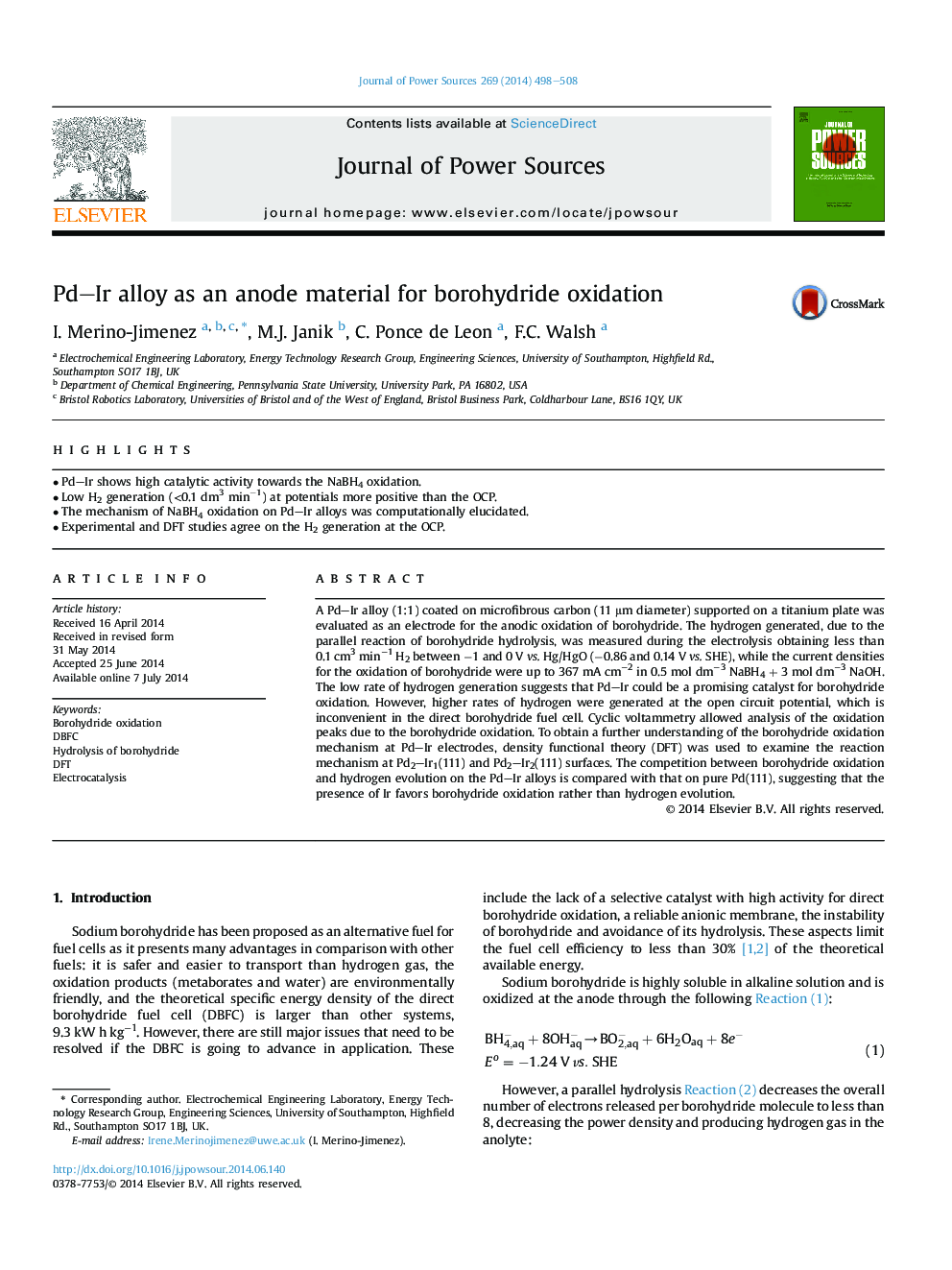| Article ID | Journal | Published Year | Pages | File Type |
|---|---|---|---|---|
| 7735827 | Journal of Power Sources | 2014 | 11 Pages |
Abstract
A Pd-Ir alloy (1:1) coated on microfibrous carbon (11 μm diameter) supported on a titanium plate was evaluated as an electrode for the anodic oxidation of borohydride. The hydrogen generated, due to the parallel reaction of borohydride hydrolysis, was measured during the electrolysis obtaining less than 0.1 cm3 minâ1 H2 between â1 and 0 V vs. Hg/HgO (â0.86 and 0.14 V vs. SHE), while the current densities for the oxidation of borohydride were up to 367 mA cmâ2 in 0.5 mol dmâ3 NaBH4 + 3 mol dmâ3 NaOH. The low rate of hydrogen generation suggests that Pd-Ir could be a promising catalyst for borohydride oxidation. However, higher rates of hydrogen were generated at the open circuit potential, which is inconvenient in the direct borohydride fuel cell. Cyclic voltammetry allowed analysis of the oxidation peaks due to the borohydride oxidation. To obtain a further understanding of the borohydride oxidation mechanism at Pd-Ir electrodes, density functional theory (DFT) was used to examine the reaction mechanism at Pd2-Ir1(111) and Pd2-Ir2(111) surfaces. The competition between borohydride oxidation and hydrogen evolution on the Pd-Ir alloys is compared with that on pure Pd(111), suggesting that the presence of Ir favors borohydride oxidation rather than hydrogen evolution.
Related Topics
Physical Sciences and Engineering
Chemistry
Electrochemistry
Authors
I. Merino-Jimenez, M.J. Janik, C. Ponce de Leon, F.C. Walsh,
